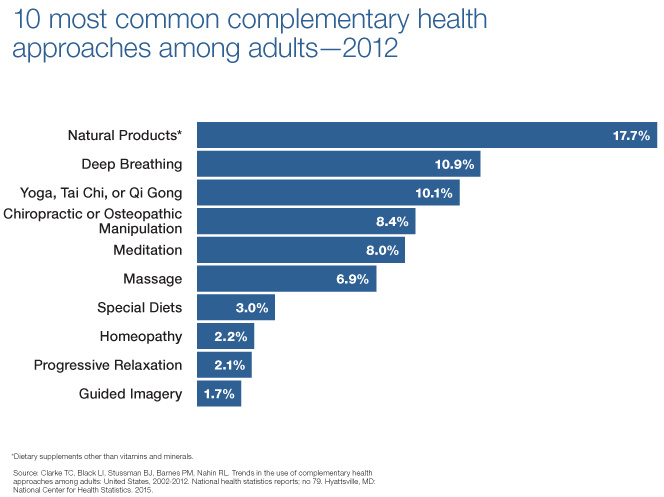Somewhat counter-intuitively, the National Institutes of Health does not, in fact, have a written definition for Health*. Instead, each of the separate Institutes and Centers focuses on defining and researching diseases as silos – i.e., studying heart disease separate from metabolic disorders, separate from allergy/infectious disease, etc. In 2015, the institute focusing on aging, the National Institute of Aging (NIA), ranked 10th in funding among the 27 total Institutes/Centers, receiving $1.171 B of total NIH funding of $30.362 B (3.8%). However, the NIA’s Mission is to (verbatim): 1) Support and conduct genetic, biological, clinical, behavioral, social, and economic research on aging, 2) Foster the development of research and clinician scientists in aging, 3) Provide research resources, and, 4) Disseminate information about aging and advances in research to the public, health care professionals, and the scientific community, among a variety of audiences.
 Not included is the direct promotion, or even defining the practical bases for healthy aging. Ironically, many of the essential components of healthy aging and wellness fall under the Mission statement of the National Center for Complementary and Integrative Health (NCCIH), which has an annual budget of approximately 1/10th of NIA ($125 million; 24th of the 27). Its Mission is “to define, through rigorous scientific investigation, the usefulness and safety of complementary and integrative health interventions and their roles in improving health and health care”. It’s research goals and objectives include; 1) The development of effective, practical, personalized strategies for promoting health and well-being, 2) To enable better evidence-based decision making regarding complementary and integrative health approaches and their integration into health care and health promotion, and, 3) To increase understanding of “real world” patterns and outcomes of complementary and integrative health approaches and their integration into health care and health promotion. A quick glance at what NIH considers “complementary” health approaches is interesting. Many of the approaches are related to stress reduction – deep breathing, mediation, progressive relaxation. Surprisingly, one of the best and most founded mind/body fitness approaches, yoga, is viewed as a complementary approach to health. Even the largest category – Natural Products – contains common used supplements such as Omega-3 fatty acids (fish oil) and glucosamine/chondroitin.
Not included is the direct promotion, or even defining the practical bases for healthy aging. Ironically, many of the essential components of healthy aging and wellness fall under the Mission statement of the National Center for Complementary and Integrative Health (NCCIH), which has an annual budget of approximately 1/10th of NIA ($125 million; 24th of the 27). Its Mission is “to define, through rigorous scientific investigation, the usefulness and safety of complementary and integrative health interventions and their roles in improving health and health care”. It’s research goals and objectives include; 1) The development of effective, practical, personalized strategies for promoting health and well-being, 2) To enable better evidence-based decision making regarding complementary and integrative health approaches and their integration into health care and health promotion, and, 3) To increase understanding of “real world” patterns and outcomes of complementary and integrative health approaches and their integration into health care and health promotion. A quick glance at what NIH considers “complementary” health approaches is interesting. Many of the approaches are related to stress reduction – deep breathing, mediation, progressive relaxation. Surprisingly, one of the best and most founded mind/body fitness approaches, yoga, is viewed as a complementary approach to health. Even the largest category – Natural Products – contains common used supplements such as Omega-3 fatty acids (fish oil) and glucosamine/chondroitin.
Thus, the NIH studies diseases, and in particular how to attempt to repair a person once a disease occurs. At the same time, preventative measures are generally viewed as alternative medicine or used as complements to more rigorous medical intervention. As such, many components of good health, and how they are implemented and affected during real-world aging, are largely overlooked at the governmental level. In short, an individual’s health and wellness are not the mandate of government funded research, and it is up to the individual to step up and take charge of them.
